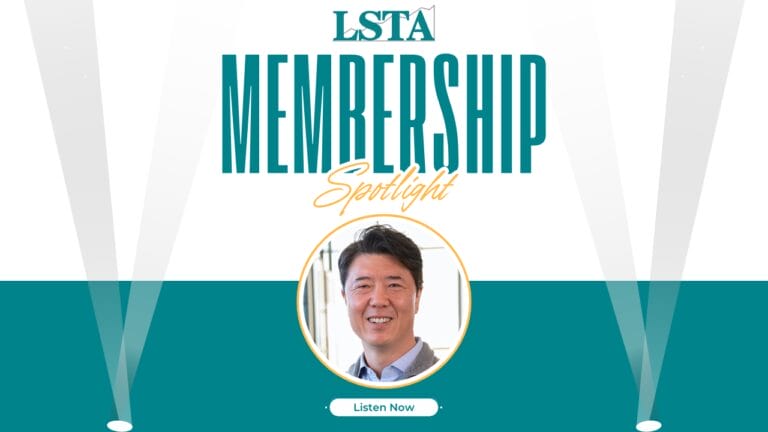October 28, 2021 - by Meredith Coffey. It was a big fortnight for leaving LIBOR. First, banks increasing are originating or refinancing loans in SOFR. Second, these actions coincided with strong commentary from the OCC, which heretofore had been relatively quiet on LIBOR transition. We discuss both below.
Banks are demonstrating their LIBOR transition efforts in word and deed. First, the “deed”: More loans are being originated – or refinanced – on SOFR. Refinitiv reported that at least two companies – Clariant Pigments and Gateway Casinos & Entertainment – changed their rate to SOFR. This follows a number of leveraged loans – such as Walker & Hunton, Traverse Midstream, Draslovka and inTEST – launching on SOFR in October. Most of the loans are offering a tenor-based credit spread adjustment (“CSA”) to maintain the economics between (higher) LIBOR and (lower) SOFR. Looking at this small sample, there appears to be a gravitational pull toward a 10 bps CSA on 1M SOFR contracts and 15 bps for 3M SOFR contracts. We are told this is based off the forward LIBOR-SOFR swap basis. (See the 10.15.21 Newsletter COW for a demonstration.) Importantly, this trend isn’t emerging from just one institution; JPM, BofA, Morgan Stanley and M&T bank can all be seen on the left of new deals. However, we would flag a potentially different approach in an IG deal. Estee Lauder includes a 10 bps CSA, but Refinitiv is reporting it as included in the margin itself.
Next, the “word”. On Tuesday, banks at the ARRC’s SOFR Symposium spoke clearly about their transition efforts. First, when asked how SOFR emerges, Citi paraphrased Hemingway, stating: “Two ways: Gradually, then suddenly.” The loan market has gradually gotten to the place where it can originate SOFR loans. While it would have been nice to be doing SOFR loans 6-9 months ago, Wells noted that a critical precondition was ARRC endorsement of Term SOFR. Considering that the ARRC endorsement came in late July, the fact that we have Term SOFR leveraged loans clearing market is October is relatively impressive. Citi, meanwhile, has issued more than $30 billion of SOFR debt and JPM has led the majority of Term SOFR leveraged loans that hit market in October. SOFR is suddenly doable.
But will banks continue to offer LIBOR loans? Wells noted that they have a “stop sell” on LIBOR; while they still can provide LIBOR loans at the borrower’s request, it requires a senior level exception. Net-net, there are very few new LIBOR term sheets coming through. On the loan side, we might soon be shifting from “gradually” to “suddenly”.
These words and deeds coincided with a strong showing from the OCC. Last week the supervisor released a Self-Assessment Tool for LIBOR transition and this week, Acting Comptroller of the Currency Michael Hsu joined an ARRC SOFR Symposium to discuss the end stages of transition.
In his prepared remarks and fireside chat, Mr. Hsu made his view abundantly clear. First, with respect to LIBOR replacements, he noted that “[w]hat should be guiding us is a simple principle: never again. Never again should we need to revisit this issue of an unreliable and untrustworthy rate.” He flagged IOSCO’s recent “concern that some of Libor’s shortcomings may be replicated through the use of credit sensitive rates that lack sufficient underlying transaction volumes.” He reiterated that “the OCC shares these concerns” and, “to this end, OCC supervisory efforts will initially focus on non-SOFR rates.”
If the gentle reader wonders how the OCC will focus on non-SOFR rates – e.g, credit sensitive rates or “CSRs” – the supervisor last week helpfully published the aforementioned Self-Assessment Tool. The Comptroller noted at a similar tool will guide the examiners. While the Tool notes that “the OCC does not endorse a specific LIBOR replacement rate, the supervisory expectation is that the rates identified are robust.” There are then 10 questions and sub-questions in considering replacement rates, including, “During a stress period, will the rates reflect competitive forces of supply and demand from a sufficient number of arms-length transactions?”, “Can market participants independently confirm the rates published by the benchmark administrator?”, and “Do the underlying data span at least one full economic cycle?”
Regulators have also stressed that if banks used non-SOFR rates – which they are certainly permitted to do – then fallback language must be robust. Thus, the seven self-assessment questions on fallbacks. In discussions, we have heard that CSR fallbacks must have: 1) a clear, executable trigger and 2) clear fallback rates. The LSTA has been working with our CSR Working Group to develop fallback language with both attributes.
Finally, the Comptroller noted as clearly as possible that LIBOR origination must end by December 31, 2021. While existing contracts should be honored – for instance, new draws on revolvers booked in 2021 are permitted – tenor extensions and non-contractual LIBOR exposures should not be executed. (We dissect that announcement here.)






